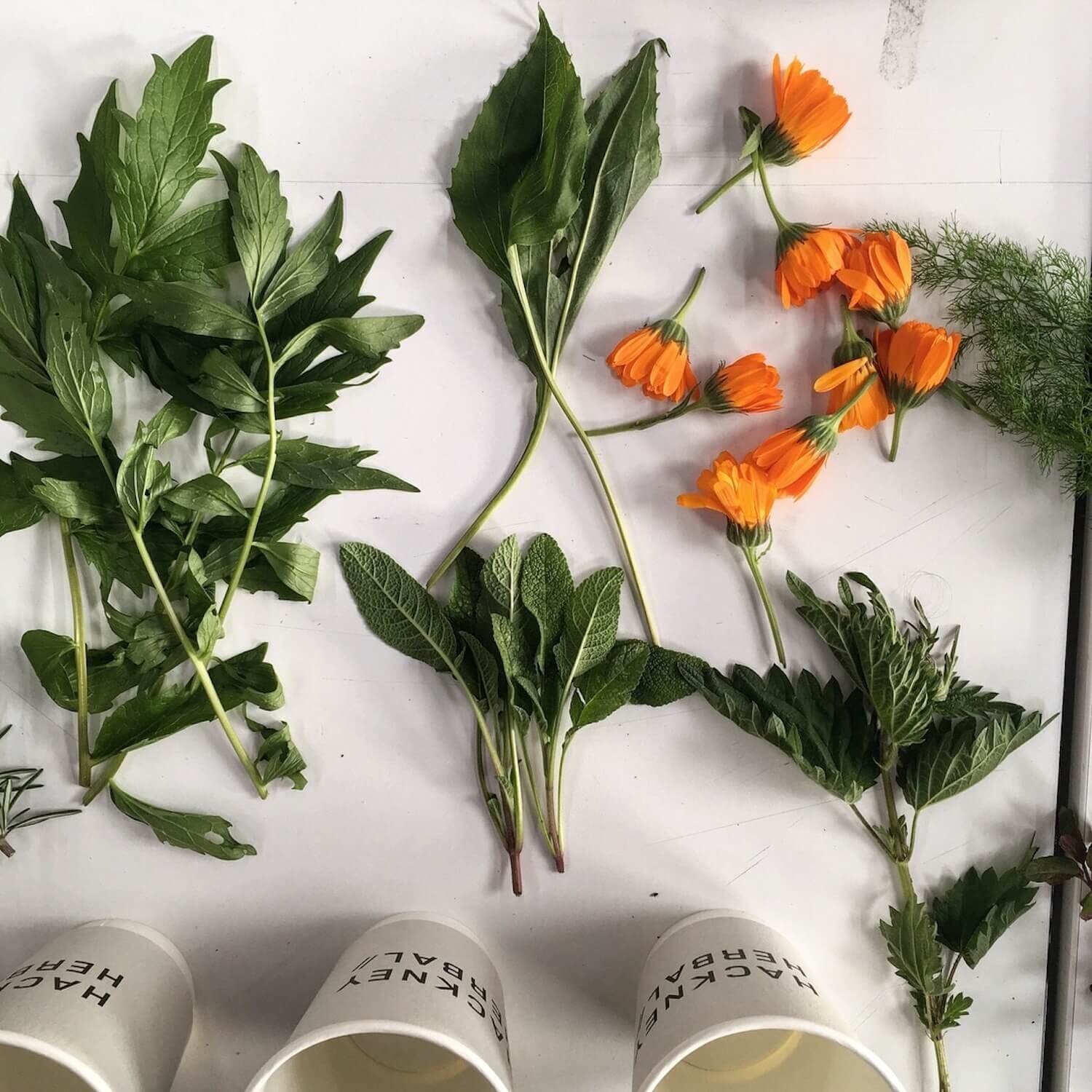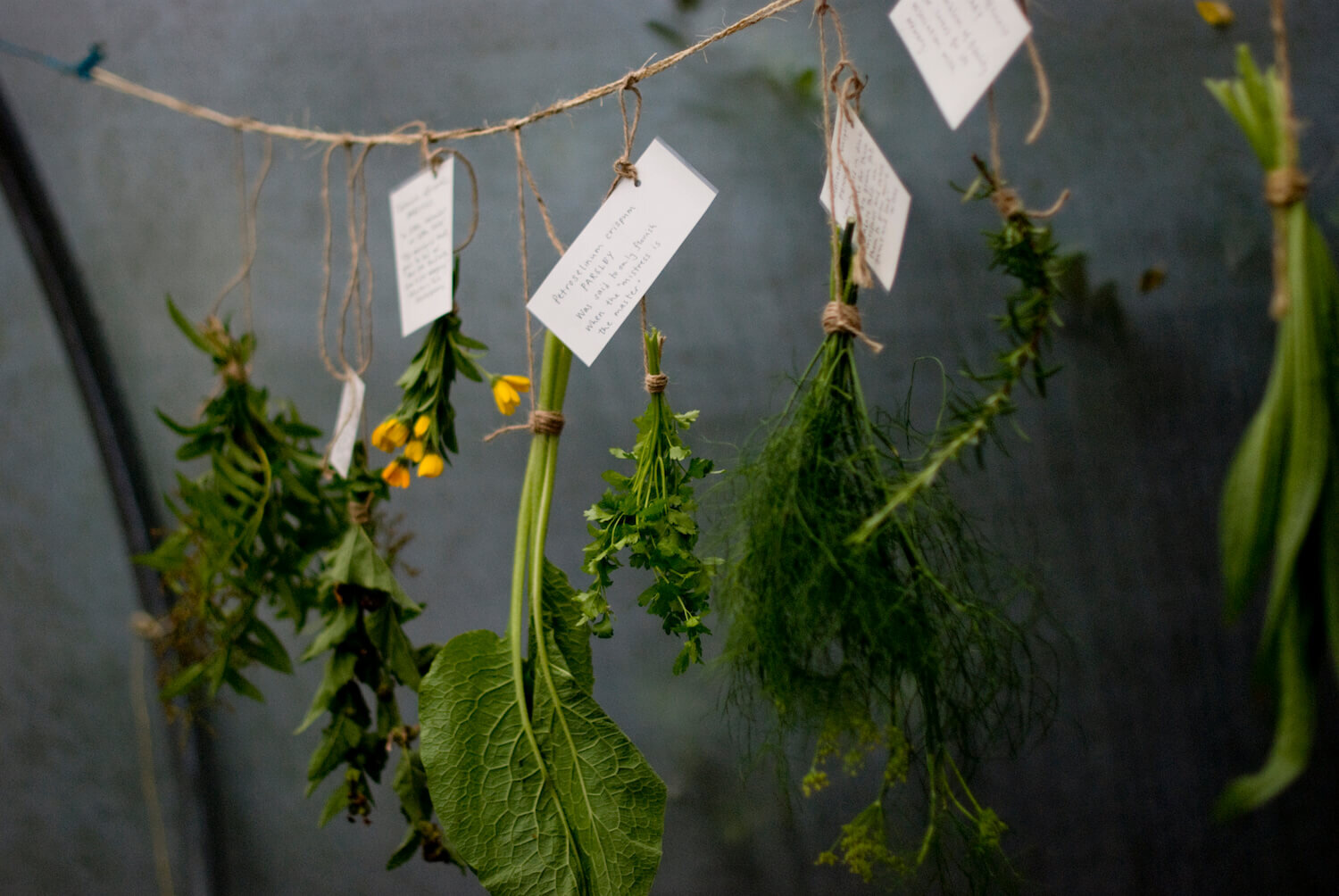Nat Mady, Herbs For Wellbeing
HACKNEY HERBAL
Hackney, East London
Championing wellbeing through herbs, the profits from Nat’s Hackney Herbal tea blends fund nature-based activities within east London to promote good mental health, from gardening courses to social gatherings. The urban gardening project started in 2015 with a patchwork of sites around Hackney, growing the likes of peppermint, sage, lemon verbena and elderflower, and has now set up home in Hackney Wick.
”I don’t have any gardening qualifications, I’ve just spent the last 10 years learning by doing. I started growing herbs in 2011 when I moved to Hackney. I didn’t have any outdoor space where I was living, so I joined a community garden. I started with the more common, fragrant herbs, like lemon verbena and rosemary, and I also enjoyed growing different varieties of basil and thyme. As I started to learn more, I did an introductory course to herbal medicine and making remedies, which really broadened my horizons on how herbs could be used for different things, from skincare to cooking.
In the community garden, we used to have open days and informal workshops showing people how to make cuttings and teas. It brought people from different cultures together and they would talk about the herbs they had back home or remembered from their childhood; there was a lot of excitement over the diversity of herbs. I was learning about the voluntary sector, charities, social enterprises and ethical businesses, and was keen to find a way to continue putting on these events and activities, bringing people together and sharing knowledge. At the time, social enterprises weren’t as common as they are now.
Spending a lot of time in different community gardens made me realise that herbs were everywhere. People were using them but perhaps weren’t appreciating how much value they had. The idea was to harvest things we were growing but to also get people to donate and forage for herbs that were in abundance in the area, and to create tea blends, which I had already been doing for years to give as presents. The last link was to try and find a café to buy the herbs, so I got in touch with the charity The Centre for Better Health and approached them about doing a pilot six-week herb course – an introduction to growing herbs, how to make teas, how to make remedies – with the idea that any money made from selling the tea could help subsidise that course, and be free to local people who were referred through the Wellbeing Network, a mental health pathway.
“The garden has allowed us to have regular volunteer and supportive sessions”
Nat Mady
We were growing in a garden on Mare Street but were evicted last year; it’s a problem of operating on private land. Hackney City Farm supported the project early on and gave us space to grow – they let us build some raised beds in the corner of one of the fields, so we shared the goat field. Two years ago we were approached about a site in Hackney Wick, which had a garden, and used to be a community centre and day centre. We took the main garden and the smaller herb garden, so we can run weekly sessions and our projects. Our vision for that space is to have a really lovely demonstration garden but also create a forest garden in the bigger space, which is open all the time, for people to walk through.
One key thing the garden has allowed us to do is to have regular volunteer sessions and weekly supportive sessions for people who might get referred to us through local charities we work with. Something we were due to start the week after lockdown was a new session for people to self-refer. We had everything set up to work with the self-prescribers who work alongside GP surgeries. If someone is going to the doctors regularly and going because, for example, they are lonely and don’t have much of a social network, then they have an option of seeing a social prescriber who acts as a link between the patient and activities that someone could get involved with in the community to meet people and get out of the house, learn a new skill, or a pathway back to employment. We’ve got funding to pilot that this year.
We run three to five free community courses each year, which are free for Hackney residents – there is a bit of leeway, but we give priority to local residents. We have a monthly get-together for everyone who has come to our community courses, so there’s a longer term engagement with people and continued learning and support.
“
I love lemon verbena, passion flower, oat straw and lime blossom. It’s designed
around sleep”
When making the teas, everything is done by hand at our studio space on Wells Street. We’ve got a massive south-facing window, so it works really well for drying the herbs we’ve grown. We have lots of racks everywhere and we air-dry everything – although we will get a dehydrator this year. The herbs are laid out individually and, once they’re dry, they’re crumbled a little bit, depending on how they’re harvested. It’s hard to remember how I went about making the blends in the beginning, but when making them now I tend to think about the mixture of properties the herbs have to make something that might be good for sleep or digestion, or something uplifting, and then balance that. Unless I know something is really overpowering, I mix things in equal parts to begin with, then taste and tweak. It’s a lot of brewing and tasting. Sometimes, and I probably shouldn’t say this, measuring things in equal parts taste good and you don’t have to refine it too much. One blend that I really love is lemon verbena, passion flower, oat straw and lime blossom. It’s designed around sleep and burnout; it’s very calming.
If you’re growing herbs in an urban environment, it’s really important to pick the right plant for the right place – don’t try and grow something sun-loving in complete shade because you’re always going to struggle. Also pick the right pot size: use pots that are at least 30cm deep for the bigger herbs; the bigger the pot, the healthier your herbs will be. The easier things to grow are the perennial plants, so the ones that come back year after year (lavender, rosemary and sage). You don’t have to do too much to them to keep them happy. But also experiment – I always say all of these things and then go back on myself and say just try and see what happens. If you asked me to name all the different parts of a flower, I’d probably get them muddled up, but it’s not fundamental. Just start: put some seeds in a pot.“
To find out more, visit hackneyherbal.com
Photography: Hackney Herbal
@hackneyherbal



